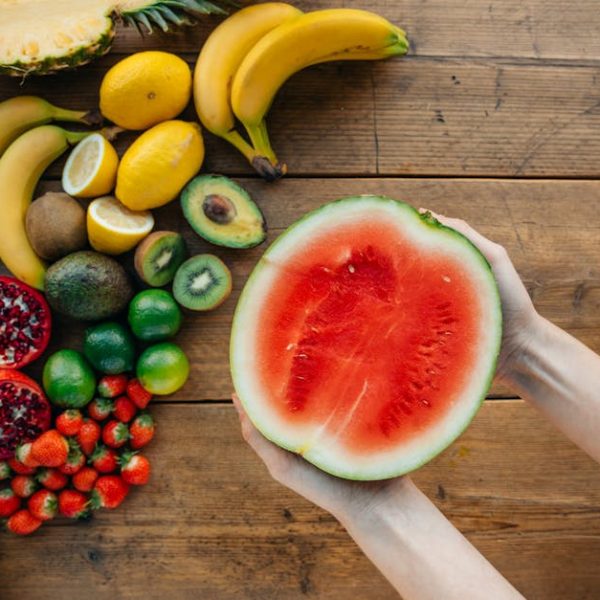Nothing screams summer more than a vibrant, fresh fruit salad. Insights into maintaining its freshness, however, can ensure this iconic treat becomes a perennial highlight rather than just a warm-weather specialty. There’s a wide range of factors that contribute to the longevity of fruit salads, which can be easily organized and manipulated for extended enjoyment.
The Lifespan of Fruit Salad
Just as flowers wilt and bread turns stale, a fruit salad’s lifespan is inherently finite. Yet, by understanding the elements that influence its longevity, you can savor your fruit salad for a lengthier span. Generally, a properly refrigerated fruit salad can last for 3 to 5 days, whereas leaving it at room temperature dramatically shortens this to a mere few hours. Evidently, refrigeration is vital, but it requires more finesse than simply tossing the bowl into the fridge.
- Set your refrigerator between 34 to 40 degrees Fahrenheit – any higher accelerates decay, whilst lower risks freezing the fruit.
- Store the fruit salad in an airtight container or tightly wrapped to prevent flavor loss and cross-contamination.
Factors Impacting the Freshness of Fruit Salad
Multiple factors culminate in maintaining or degrading your fruit salad’s freshness. Foremost amongst these are the types of fruits used, inclusion of dairy, and exposure to environmental conditions.
- Different fruits have diverse shelf lives: Berries and bananas degrade faster than apples and oranges.
- Dairy products like whipped cream or yogurt curdle easily and are prone to bacterial growth.
- Exposure to high temperatures or sunlight can rapidly accelerate decay.
By taking these factors into account, you can strategize the contents of your salad or set in place proper storage solutions, wrestling control over the freshness of your fruity delight.
Signs of a Spoiling Fruit Salad
Knowing when to retire a fruit salad is just as critical as preserving it. There are several tell-tale signs that your salad has started to turn south:
- Unpleasant changes in smell. Fresh fruits have a sweet or tart aroma, which changes to a musty, alcoholic smell upon spoiling due to fermentation.
- Browning or unusual color changes. Oxidation or bacterial growth can alter a fruit’s color.
- Unwanted texture shifts such as sliminess are indicators of bacterial overgrowth or mold.
Whenever in doubt, stick to the wisdom of “when in doubt, throw it out”. Consuming a spoiling fruit salad harbors risks of foodborne illnesses, an outcome far more damaging than a wasted bowl of salad. More on this to come in our next part.
Maintaining the Freshness of Fruit Salad
Retaining the vibrancy and freshness of your fruit salad is far simpler than you might think. It all boils down to a few nifty strategies that effectively extend the salad’s lifespan:
- Incorporating citrus juices like lemon or orange not only adds zeal to your salad but also slows browning and acts as a natural preservative.
- Using freshly cut fruits over pre-cut ones ensures a longer shelf-life, since pre-cut fruits have increased surface area exposed to air, hence speedier decomposition.
- Lastly, promptly refrigerating the salad in an airtight container minimizes exposure to heat and airborne bacteria, thus enhancing freshness.
Minimizing Waste with Fruit Salad
Fruit salads are a terrific way to cut down waste, especially when you’ve got an abundance of fruits or some nearing their expiration. Here are a few steps to significantly cut down waste:
- Making smaller, individual portions can ensure that there’s no leftover salad sitting out.
- Overripe or bruised fruits are perfect for blending into smoothies or creating homemade jams rather than being thrown away.
- With any leftovers, consider repurposing them into other recipes like fruit popsicles or fruit-infused water.
Recap
One should never have to compromise between freshness and longevity when it comes to fruit salad. Armed with the knowledge of what affects your salad’s freshness, signs of decay, and how to best maximize its lifespan, you can now enjoy your fruit salad at the peak of its freshness while minimizing waste. Just remember, refrigeration is key, vigilance is crucial and creativity is your best friend while dealing with fruit salads. Enjoy the fruity delight!
Key Takeaway:
- Fruit salads have a naturally limited lifespan, but proper refrigeration between 34 to 40 degrees Fahrenheit can extend it to 3-5 days.
- Factors like the type of fruits used, inclusion of dairy products, and environmental exposure impact the freshness of fruit salad.
- Signs of a spoiling fruit salad include changes in smell, color, and texture.
- Maintaining freshness involves strategies like using citrus juices, freshly cut fruits, and prompt refrigeration.
- Minimizing waste with fruit salad can be achieved by portioning, repurposing overripe fruits, and utilizing leftovers creatively.
Remaining vigilant for signs of spoilage, understanding the variables in play, and employing simple preservation strategies can greatly extend your fruit salad’s freshness. Enjoy the vibrant sweetness of your fruit salad with the know-how to maintain that optimum freshness and reduce waste. Eat well and stay fresh!
FAQs
Q: Can I freeze fruit salad to extend its lifespan?
A: While freezing will certainly prolong the salad’s lifespan, it might affect the texture of certain fruits upon thawing, making them mushy or watery. It’s best to consume fresh fruit salad within its normal refrigeration lifespan for the best taste and texture.
Q: How does dairy affect the freshness of fruit salad?
A: Dairy products like whipped cream or yogurt can easily curdle and are prone to bacterial growth, which can speed up the spoilage process of your fruit salad. If you plan to store your fruit salad for multiple days, it’s best to add any dairy products just before serving.
Q: Can I use lemon juice on all types of fruits for my fruit salad?
A: Yes, most fruits can benefit from a sprinkling of lemon juice which acts as a natural preservative, slowing down oxidation. However, be cautious that the sourness of the lemon can alter the taste of the fruit.
Q: What is the best way to keep my fruit salad fresh during a picnic or outdoor event?
A: At outdoor events, keep your fruit salad in a cool, shaded area and return it to an ice box or cooler when not being served. Heat and sunlight can accelerate the decay of fruit salad.
Q: How does portioning help reduce waste with fruit salad?
A: By preparing individual portions, you reduce the chance of leftovers sitting out. Each serving is consumed entirely, no fruits are left exposed, and the remainder of the salad stays fresh and hygienic in the fridge.
We invite you to share this article and explore other posts on our website to learn more about maintaining freshness in your food and more!





